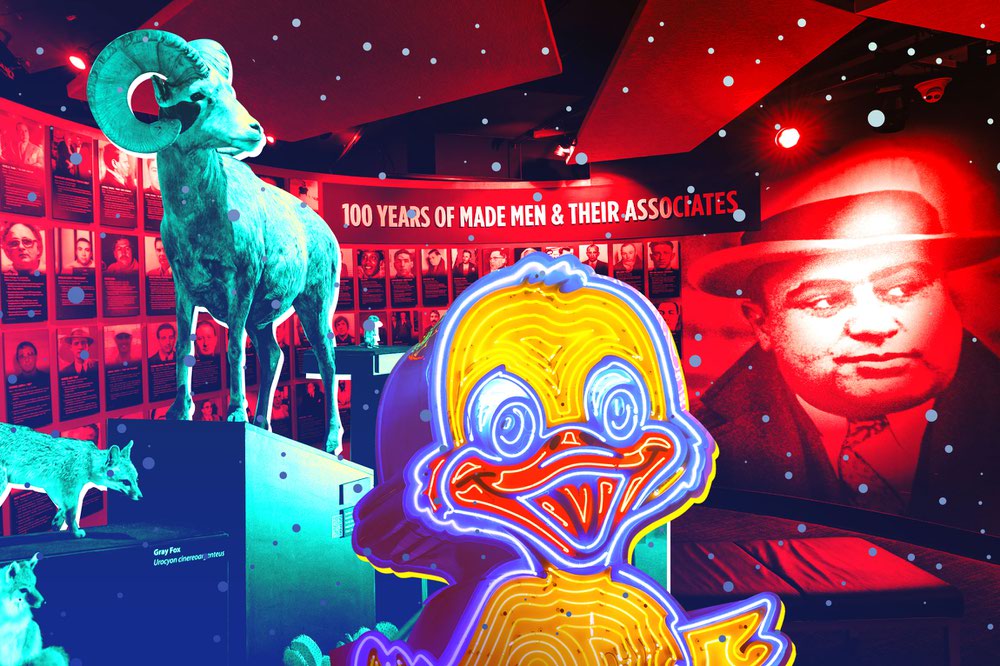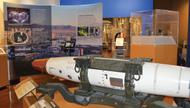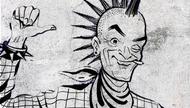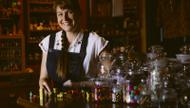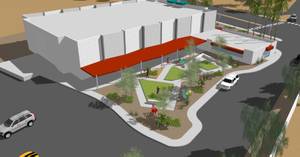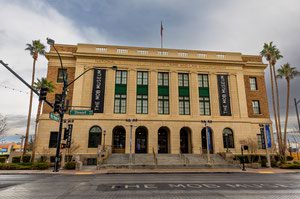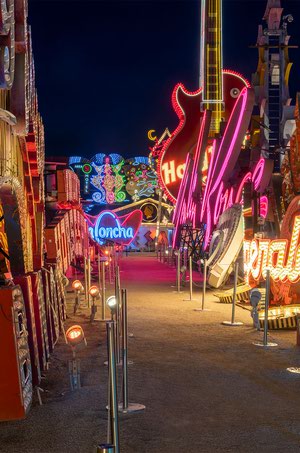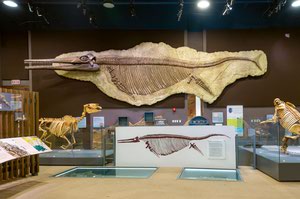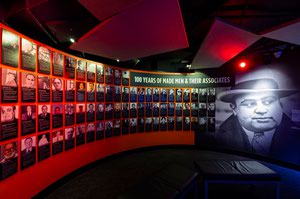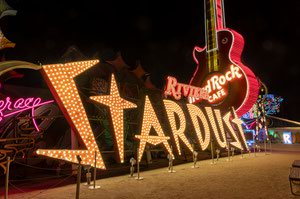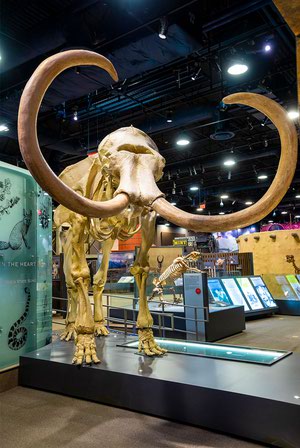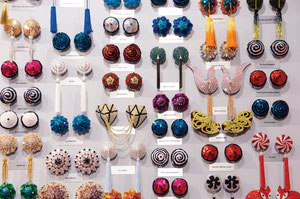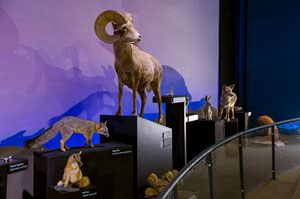There’s a trick to telling the story of Las Vegas. No matter who’s listening, they already know a significant portion of the tale. And they know it in a personal, specific way, because they’ve helped to create it through their own experiences.
Historic Attractions
“Las Vegas is the largest city born in the 20th century. The growth has been rapid and recent, so people have seen Las Vegas develop in a way people in other cities just don’t see,” says Jonathan Ullman, president and CEO of the Mob Museum. “In other major cities, the history is maybe farther away. But the people who have lived in Las Vegas or visited frequently have a lot of personal connection and stories, insider knowledge and observations.”
Ullman and the team that opened the Mob Museum in Downtown Las Vegas in 2012 had to consider that special challenge when designing their environment and programming, but it turned out to be more opportunity than obstacle. Organized crime remains one of the most notorious aspects of the city’s history, and the museum’s academic treatment of the topic has established the venue as both authority and attraction; the Mob Museum has drawn more than 3 million visitors to date and averages 400,000 from around the world every year.
“We’ve learned the audience is diverse and pretty sophisticated,” Ullman says. “There are people who come in with relatively little understanding of how Las Vegas developed or the history of the mob locally and nationally, so we’re more of a primer. Others come in with a much deeper understanding, knowing about Las Vegas and wanting to know more, and wanting to share their own stories. We engage them where they are.”
Not unlike the way casinos and entertainment have evolved to redefine the way the world sees Las Vegas, museums in Southern Nevada continue to create distinct experiences by pinpointing specialized stories and audiences.
The Mob Museum moves deftly between celebrating Nevada Day with historical lessons and breaking down the effects of crypto-criminals at the national and international level.
The nearby Neon Museum, which also opened its current facility in 2012, offers a singular celebration of Vegas art and architecture beyond the wildly popular tours of iconic casino signs in its Neon Boneyard.
The newly rebranded Atomic Museum (see sidebar) examines the heady topic of America’s nuclear weapons testing program at the Nevada Test Site with a blast of pop culture influence, a unique blend of science and history.
And those are only three of the well-defined institutions that together help tell Las Vegas’ story. The list includes more traditional, collection-based facilities like the 31-year-old Las Vegas Natural History Museum and the 40-year-old Nevada State Museum, along with others that stand out more as only-in-Vegas attractions, including the Erotic Heritage Museum, the Boulder City-Hoover Dam Museum and the Burlesque Hall of Fame.
Each venue takes a different approach when it comes to audience appeal and whether to focus on local or tourist visitors.
“It’s still this transient place where a lot of people come to work and … then go live their lives, but you also have 45 million people coming [to visit],” says Dustin Wax, a 20-year resident and the Burlesque Hall of Fame’s executive director of 11 years. “Tourists outnumber locals, and that means we’re competing with Cirque du Soleil shows, Area15, [temporary] attractions and all these really well-funded, powerful spectacles.
“We have to be really focused on the experience, on not being dusty old museums. We don’t like to talk like that, but that’s the stereotype people have.”
There’s nothing stereotypical about the Burlesque Hall of Fame, which feels more like a museum than a hall of fame organization that inducts honorees. Located in the Arts District since 2018 but established in Las Vegas some 16 years ago, it’s billed as the only museum in the world dedicated to the history and art of burlesque, so its collection and educational mission reach beyond Las Vegas. Burlesque has almost always been considered a low-brow, adults-only experience, Wax explains, and its history hasn’t been well-preserved.
“But that history is being carried forward by the people telling the stories, doing it themselves, and it’s also women’s history, working-class people’s history,” he continues. “A lot of performers were minorities as well, so there are a lot of reasons why these stories were not preserved in a traditional way.”
The museum experience and 300-square-foot exhibition space was built around the telling of those stories using lots of photographs and a bit of humor, accurately portraying burlesque’s outsize personalities with the help of volunteers, many of whom are former or current performers. The Burlesque Hall of Fame sees some 6,000 visitors per year, and though school groups don’t bolster that tally as they do at many other museums, the experience is far from R-rated.
In a cultural landscape full of niche institutions, it might be one of the most unique. But that’s the thing about Las Vegas—it’s such a specific place, perhaps it’s best served by specific museums.
“We don’t have a City of Las Vegas history museum, which seems weird, because every city our size has a city history museum,” Wax says. “But between us, Mob, Atomic, Neon and others, together we make up the city museum.
“It’s the same with art,” he continues. “Instead [of one major museum], we have two [temporary] Van Gogh exhibits, the Bellagio Gallery, and restaurants with hundred-million-dollar collections on the walls.”
A major, stand-alone art museum for the city has long been discussed and considered, and members of the cultural community say it will happen when the time’s finally right. But a variety of other institutions help fill the gap, including UNLV’s Marjorie Barrick Museum of Art and the Nevada State Museum at the Springs Preserve. The latter is another of the region’s most unique institutions, splitting the difference between local history and culture.
“It’s probably our mission to be that bedrock museum, from the perspective that there are few that have collections in specialized storage, and also that there’s a history that’s joined,” says Hollis J. Gillespie, Nevada State Museum’s director. “It’s typical of state institutions like ours to be called general museums, but that doesn’t give you an indication of what they do.”
The Nevada State Museum remains something of an overlooked gem. The current temporary exhibit explores the influential career of architect Paul Revere Williams—his La Concha Motel lobby is now the visitor center at the Neon Museum—through the photography of Janna Ireland, while the permanent gallery exhibit focuses on the natural history of the region and how it was shaped by pioneers, railroaders, entrepreneurs and the Hoover Dam.
Next up will be a glamorous look at Liberace in May (with a big assist from the Liberace Foundation and Museum Collection, which was once its own Las Vegas venue), and the end of the year will deliver an exhibit about the Spanish Trail.
Gillespie, who has been a museum director in several other states and has run her own industry consulting practice, says the adventurous, outgoing spirit that characterizes Southern Nevada’s history is alive and well in the cultural community.
“Las Vegas is unlike any place else, and people are more willing to take risks and do innovative things to get people engaged,” she says. “I think it’s a benefit that we have so many attractions and experiential places [to compete with], because some of the technology and things happening in our casino world actually keep us on our toes. It sets the bar for people and expectations of what you can experience when you come here.
“But we’re different in that we’re not trying to create something like a faux Paris or New York City,” she continues. “We are the authentic experience. and that makes a difference. But there’s room for all of that.”
From local residents to Vegas visitors, museums might not be a prominent part of everyone’s background. Several generations of Southern Nevadans grew up taking school field trips to the Discovery Children’s Museum and the Las Vegas Natural History Museum, and today students have many more opportunities, but that’s not necessarily a universal introduction. And certainly not every tourist plans a museum visit among their weekend priorities.
That’s where the attraction/museum balance comes in, and that, too, can be both obstacle and opportunity.
“We’re always thinking about what we’re presenting, how we can do it in different dimensions and an attraction for tourists, and create an experience that can be entertaining,” Ullman says. “At the same time, you want to be that community-gathering place, a special place for locals where you can have those richer, deeper conversations. If you’re a modern museum, you’re doing all of those things.”
Museums in Las Vegas, as everywhere else, must keep moving, which includes creating new specialized and general experiences. The developers of the Hard Rock Hotel that will soon replace the Mirage on the Strip, have indicated they plan to include some sort of music museum to the new resort. The Punk Rock Museum (see sidebar) is scheduled to open in March between the Strip and Downtown. And the City of Las Vegas has taken initial steps toward creating an African American museum and cultural center in the Historic Westside community.
The real story of Las Vegas is that it’s a real place, not simply the glitzy playground people from all over the world come to visit and explore. That evolution continues as Southern Nevada gets better at recording, presenting and preserving its history.
“There is a perception that [Las Vegas] is not historically minded, but that’s not true at all,” says Aaron Berger, executive director of the Neon Museum. “It’s a city that’s constantly innovating and reinventing itself, but there are still so many examples of great preservation taking place, even though they may not be like other cities across the country with giant historical markers. That’s not the way Las Vegas does it.”
Click HERE to subscribe for free to the Weekly Fix, the digital edition of Las Vegas Weekly! Stay up to date with the latest on Las Vegas concerts, shows, restaurants, bars and more, sent directly to your inbox!
